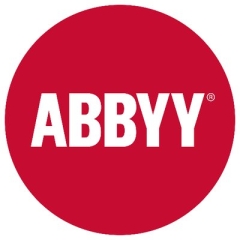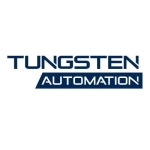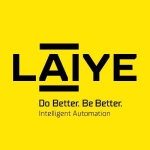What is our primary use case?
Most of the use cases were invoice-related for sectors such as supply chain and finance. Sometimes, they were a little bit related to HR and payroll. We also had use cases for passports and IDs and documents related to HR and onboarding.
I've also worked on a larger scale project for importing and exporting in Dubai. It had invoices, country of origin statements, and everything else that comes through with an import check event.
It was on-premise on all the projects I've worked on. I've never worked on it with the cloud. We would connect it to an RPA tool, such as UiPath or Automation Anywhere. So, it was a part of a larger solution.
How has it helped my organization?
Usually, it does the reading task for a document, such as an invoice, and that is a very mundane task for an employee when they have other stuff to do. It pretty much takes that off their plate. It gives them time to focus on bigger picture things or even look at the process as a whole.
It lessens the errors that can happen. An employee can be tired and read a number wrong, but if it is a computer-generated invoice, it is going to be of the best quality. If it is computer-generated, it will come out with zero error every time, and it will do it a lot faster than a person. It will extract the information and continue doing whatever you need to.
What is most valuable?
Verification station is a really good feature. It allows part-owners to be able to take a look at what comes out of the tool after a document, such as an invoice, is run through ABBYY. It also allows them to update it if there are any mistakes. So, it kind of gives them a little more control over what goes through the system and lessens the errors.
What needs improvement?
They say that they have invoice training or document training where if you put in a certain number of documents of the same type and you fix it once, twice, or a few times, it'll automatically be able to read the same document perfectly without you having to create a layout for it to follow. That has never worked properly for any project, so I just stopped recommending it completely. We spent time trying to test and getting a bunch of invoices to test it with, and in the end, it just didn't do what it needed to. If they fix that or if they can improve on that, that would be great. It will save a lot of time for a lot of people, and it will allow people with less experience with ABBYY to be able to use it.
The way FlexiLayout Studio and Project Station read a document, such as an invoice, is a little bit different. So, if you set it up in FlexiLayout Studio and create a template, it will read it just fine, but when you import it into Project Studio, sometimes, it will not read it the same way. The way both of them read is a little bit different. So, you have to go back, and you have to change it again, and it is trial and error until you get it right.
Its price should be a little lower. It is a lot higher than the competition.
Buyer's Guide
ABBYY Vantage
October 2025
Learn what your peers think about ABBYY Vantage. Get advice and tips from experienced pros sharing their opinions. Updated: October 2025.
869,832 professionals have used our research since 2012.
For how long have I used the solution?
The last project I worked on was in February of this year.
What do I think about the stability of the solution?
It is pretty stable. If I remember correctly, it has only crashed once, and I don't think it was a system issue. It was just some weird, bizarre glitch that happened at the time. Once the projects were live and running on the client system, we've never had any issues that I can think of.
What do I think about the scalability of the solution?
Its scalability is good, but it also depends on how you're working on a project from the beginning. I like to put everything together, and I usually do think of it in a way that if we were going to add invoices in the future, it won't be a hassle. It is pretty scalable. I can have many different invoices on the same project. I can have a project going on the client-side for years and then just add to it if needed.
Usually, we have some type of business analyst whose main role is doing something that we call an OCR study. The business analyst would be reading the invoices and just telling us what the client wants to extract from them. On their end, they also make sure that the quality of the invoices is good for ABBYY. It can't be something that is written over and damaged or put in someone's pocket for a day and then in the scanner. It won't give us perfect results.
There would also be a developer who would take a look at the OCR study fed by the analyst and then think of how to develop each template. If you don't understand how you're going to design the whole project, you might need someone. Because we're putting it into another automation tool as well, after we've sort of developed everything, depending on the scale of the project, we may have somebody dedicated to just testing the submission before sending it over to the client.
We have plans to use it, and of course, it is a good product, but we work with what the client wants. So, if a client doesn't want it, then they're not going to be using it. It is not like a solution for every case in my line of work. It depends on if the client actually has a bunch of invoices or a bunch of documents that they need to read quickly. If that's the case, then we definitely recommend it every time. We recommend it over any other OCR solution on the market. ABBYY in itself isn't a perfect tool, but ABBYY is pretty good. It is not the best on the market at the moment.
How are customer service and support?
I've been in contact with several people from ABBYY and their support staff. They're very helpful.
Which solution did I use previously and why did I switch?
We were using the default OCR tool that came with the UiPath software. It is integrated with Google OCR and Microsoft OCR, which are okay for smaller, simpler documents, but they're not going to give you the control that you can have with ABBYY. The engine itself isn't as good.
ABBYY is definitely more mature. It's all-around better. If I pass through an invoice PDF, the percentage of getting everything right with ABBYY is higher than it is with the others. It is definitely a lot more expensive, but I can tailor what I need to each document, and I have multi-lingual support. I can pretty much just get behind what ABBYY is trying to read and make sure it is reading everything correctly, whereas, with Google OCR or Microsoft OCR, I just worked with whatever came out, and I had no control over it.
How was the initial setup?
It depends. There are two types of installations. There is the standalone installation, and there is the server installation. The standalone one is very simple. It is just a normal install. You just push the license through the command prompt, and that's pretty much it. The other one is just going to take a little while longer depending on how you're going to deploy the solution for FlexiCapture on the system. From my experience, if someone is going to install it for the first time, they might need just a bit of help, but it is not that complex.
The duration depends on the solution. It depends on what a customer wants and how many invoices you're going to be preparing in ABBYY, but usually, we say that a good rule of thumb is about one to two hours for a normal invoice. If it has a complex table, then it may take three to four hours for an invoice. So, the time taken would depend on what the client actually wants. If we have five invoices for which the customer wants to use ABBYY, they can be created in a day or two days. We'll give half a day for installation, which also depends on how many servers we're going to be using. We'll give like another half a day for testing and pushing the project. So, maybe two days for five invoices is fair.
In terms of the implementation strategy, first, I would pretty much gather all the invoices the customer needs, and usually, if they are in the same sector and in the same business, they'll be very similar. If we have 50 invoices, I would rather waste an hour or two figuring out the similar invoices and then creating just 10 templates instead of 50. After that, I'd start with identifying the means of the values that I want to extract and figure those out in all of those 50 invoices, especially the ones that are going to be in the same template. Then, I'd get to work on those templates. Once I finish those, I'd push them to the project so that I can test them there, and if everything is working fine in the project, then I'd just give the solution to the customer.
What was our ROI?
We have definitely seen an ROI. Most of the ROI is related to time because it'll take a while for a human to go through a full process. If we assume that we have a process that takes a human or an employee an hour, that would be eight hours in a day. OCR would really cut that time by a lot. I'm also talking about adding automation to it, so I'm pretty much a little biased here. We can cut that time down by a lot, and once we do that, then we just have the whole process automated. It is not being done by an employee anymore, so that employee is free to do something else. So, you're saving time, money, and brainpower.
What's my experience with pricing, setup cost, and licensing?
Its price should be a little lower. It is a lot higher than the competition, and if they just break the gap a little, then more people might jump onto their product. Their price is definitely a deterrent in the few cases that I remember.
They have monthly and yearly options, and if you want, they also have per project and per page options. We partnered with them for a few projects, and they provided us with a trial license that we use on our end for using the system, employing it, and developing the solution. On the client's end, they will charge them for the license because that's ongoing. They also get support and everything else.
They do charge extra for different types of installation. They have the standalone, which is pretty straightforward and a lot cheaper than the server installation. Server installation gives you a lot more, and it gives you control over the environment. They have a web management studio for the whole thing. You can create users and give people different permissions and track the progress of everything, so that's going to be a lot more expensive. I remember that one client was complaining about having to pay extra for having the Arabic language added to the system. I think they made all the languages free after that, but I'm not 100% sure.
What other advice do I have?
I would advise first looking at what you're trying to extract from the documents that you have. If they are simple enough and are being extracted properly through a cheaper or a free OCR tool, then just use that. It is not going to be worth the price. If you have lots of invoices and some of them get very complex, and you'd rather have the control over making sure everything is fine, and you have no room for error, then it would be better to invest in ABBYY.
The biggest lesson that I have learned from using this solution is that when creating templates with different documents, make sure that you're using different identifiers for those documents. That's because, in the beginning, you might think that it would automatically know the difference between, let's say, an Amazon invoice and a Walmart invoice, but it won't unless you tell it. So, you have to make sure that those files are unique. You also have to make sure that what you've created fits perfectly for that invoice. If you leave a little bit of leeway, it is possible that something else will be picked up that you don't want, and then it will just ruin the rest of the process. It is no fault of the OCR. You just didn't restrict it properly.
I would rate ABBYY FlexiCapture an eight out of 10. It is not perfect, but it is the best I've used.
Which deployment model are you using for this solution?
On-premises
Disclosure: My company has a business relationship with this vendor other than being a customer. Partner

















